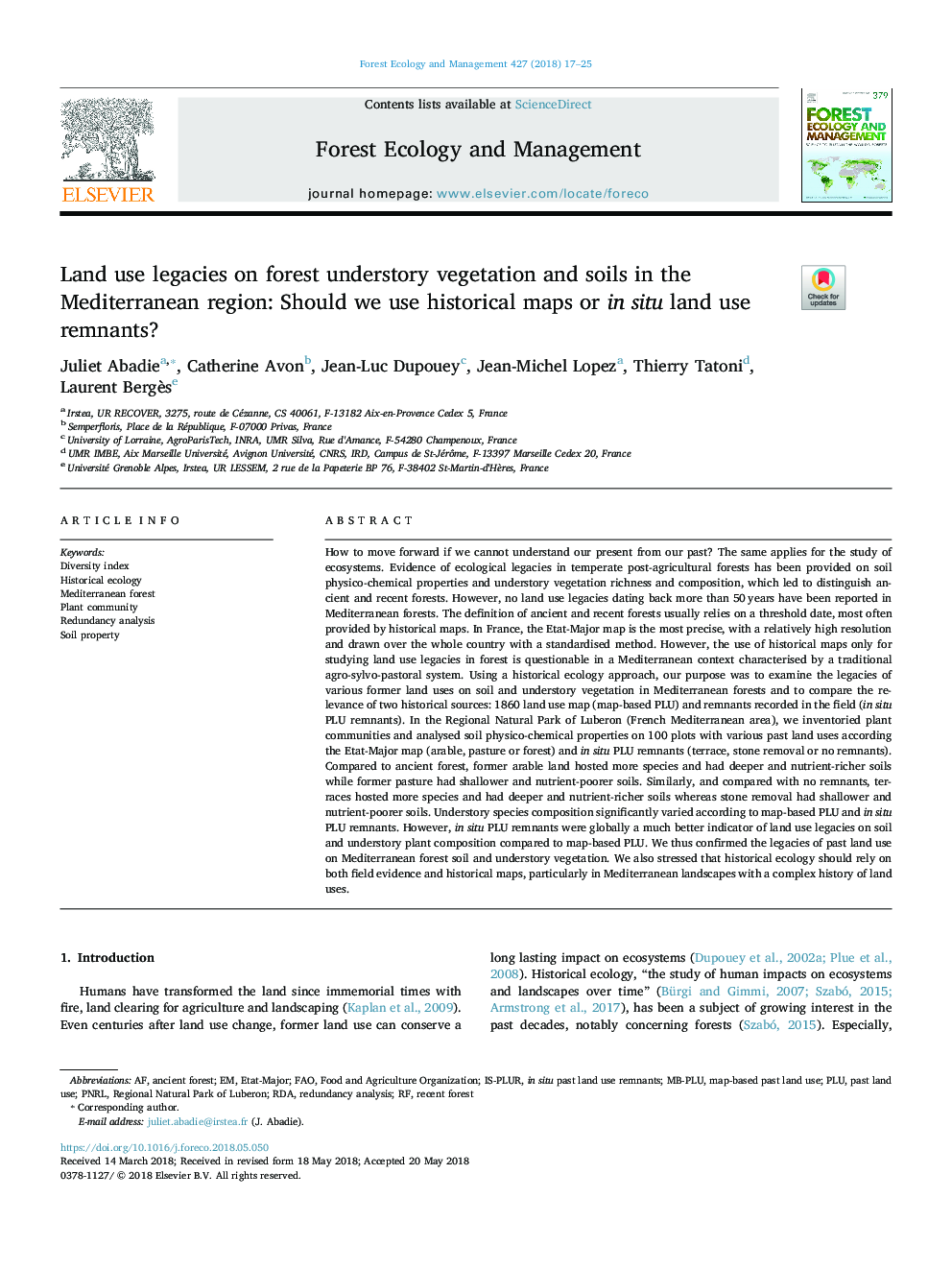| کد مقاله | کد نشریه | سال انتشار | مقاله انگلیسی | نسخه تمام متن |
|---|---|---|---|---|
| 6541489 | 1421333 | 2018 | 9 صفحه PDF | دانلود رایگان |
عنوان انگلیسی مقاله ISI
Land use legacies on forest understory vegetation and soils in the Mediterranean region: Should we use historical maps or in situ land use remnants?
ترجمه فارسی عنوان
میراث استفاده از زمین در پوشش گیاهی جنگل های جنگلی و خاک های منطقه مدیترانه: آیا باید از نقشه های تاریخی یا بقایای استفاده شده در زمین استفاده کنیم؟
دانلود مقاله + سفارش ترجمه
دانلود مقاله ISI انگلیسی
رایگان برای ایرانیان
کلمات کلیدی
RDAPLUAncient forestPast land use - استفاده گذشته از زمینSoil property - اموال خاکredundancy analysis - تجزیه و تحلیل اضافیPlant community - جامعه گیاهیMediterranean forest - جنگل مدیترانهFood and Agriculture Organization - سازمان غذا و کشاورزیDiversity index - شاخص تنوعFAO - فائوHistorical ecology - محیط زیست تاریخی
موضوعات مرتبط
علوم زیستی و بیوفناوری
علوم کشاورزی و بیولوژیک
بوم شناسی، تکامل، رفتار و سامانه شناسی
چکیده انگلیسی
How to move forward if we cannot understand our present from our past? The same applies for the study of ecosystems. Evidence of ecological legacies in temperate post-agricultural forests has been provided on soil physico-chemical properties and understory vegetation richness and composition, which led to distinguish ancient and recent forests. However, no land use legacies dating back more than 50â¯years have been reported in Mediterranean forests. The definition of ancient and recent forests usually relies on a threshold date, most often provided by historical maps. In France, the Etat-Major map is the most precise, with a relatively high resolution and drawn over the whole country with a standardised method. However, the use of historical maps only for studying land use legacies in forest is questionable in a Mediterranean context characterised by a traditional agro-sylvo-pastoral system. Using a historical ecology approach, our purpose was to examine the legacies of various former land uses on soil and understory vegetation in Mediterranean forests and to compare the relevance of two historical sources: 1860 land use map (map-based PLU) and remnants recorded in the field (in situ PLU remnants). In the Regional Natural Park of Luberon (French Mediterranean area), we inventoried plant communities and analysed soil physico-chemical properties on 100 plots with various past land uses according the Etat-Major map (arable, pasture or forest) and in situ PLU remnants (terrace, stone removal or no remnants). Compared to ancient forest, former arable land hosted more species and had deeper and nutrient-richer soils while former pasture had shallower and nutrient-poorer soils. Similarly, and compared with no remnants, terraces hosted more species and had deeper and nutrient-richer soils whereas stone removal had shallower and nutrient-poorer soils. Understory species composition significantly varied according to map-based PLU and in situ PLU remnants. However, in situ PLU remnants were globally a much better indicator of land use legacies on soil and understory plant composition compared to map-based PLU. We thus confirmed the legacies of past land use on Mediterranean forest soil and understory vegetation. We also stressed that historical ecology should rely on both field evidence and historical maps, particularly in Mediterranean landscapes with a complex history of land uses.
ناشر
Database: Elsevier - ScienceDirect (ساینس دایرکت)
Journal: Forest Ecology and Management - Volume 427, 1 November 2018, Pages 17-25
Journal: Forest Ecology and Management - Volume 427, 1 November 2018, Pages 17-25
نویسندگان
Juliet Abadie, Catherine Avon, Jean-Luc Dupouey, Jean-Michel Lopez, Thierry Tatoni, Laurent Bergès,
